数据结构:队列 和 栈 的详解
文章目录
- 栈
-
- 栈的结构和概念
- 栈的实现
- 栈的实现:
- 栈的一些应用
-
- 括号匹配问题
- 用栈实现队列
- 队列
-
- 队列的概念和结构
- 队列的实现
- 队列的应用
-
- 用队列实现栈
- 循环队列
-
- 循环队列的逻辑结构
- 结构设计
- 易错点!
栈
栈的结构和概念
栈 :一种特殊的线性表,其中只允许在固定的一端进行插入和删除元素。进行数据插入和删除操作的一段称为栈顶,另一端称为栈底 。栈中的元素遵循先进后出的原则。
压栈:栈的插入操作叫做 进栈/入栈/压栈,入数据在栈顶。
出栈:栈的删除操作叫做出栈,出数据也在栈顶。
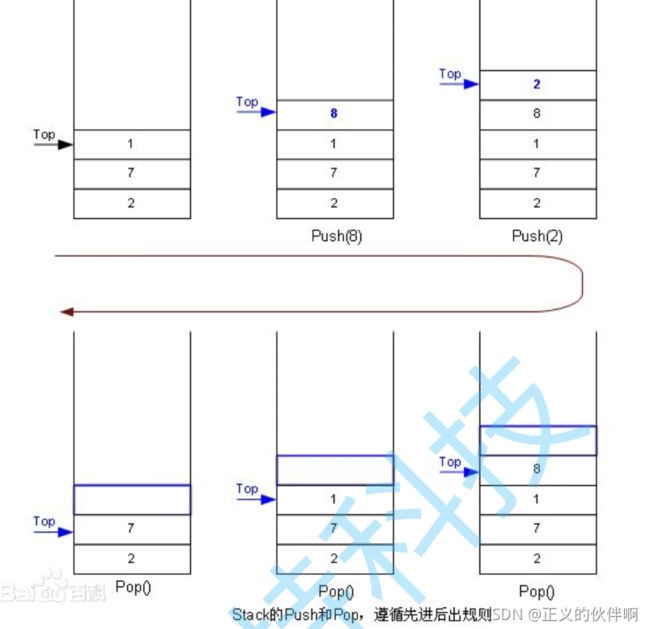
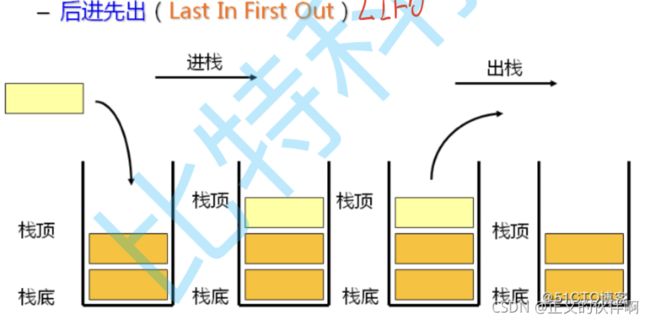
栈的实现
栈的实现一般可以使用数组或者链表,但是数组的结构要更优一点。因为数组在尾上插入数据的代价比较小。


其实两种数据结构都可以实现链表,但是为什么选择数组呢
因为由于栈的特性,使得如果使用链表,那么栈顶也就是出入元素的位置在链表的末尾,每次入栈、出栈都要从头节点遍历整个链表。
栈的实现:
#define _CRT_SECURE_NO_WARNINGS 1
#include以上时栈的结构和具体的基本操作
下面是这些具体操作的实现
#define _CRT_SECURE_NO_WARNINGS 1
#include"stack.h"
void StackInit(Stack* p)
{
assert(p);
p->a = (Datatype *)malloc(4*sizeof(Datatype));
p->top = 0;
p->Capacity = 4;
}
void StackPush(Stack* p, Datatype x)
{
assert(p);
if (p->top == p->Capacity) //检查是否要增容
{
p->a = (Datatype *)realloc(p->a,2 * p->Capacity*sizeof(Datatype));
p->Capacity = p->Capacity * 2;
}
p->a[p->top] = x;
p->top++;
}
void StackPop(Stack* p)
{
assert(p);
if(p->top)
p->top = p -> top - 1;
}
void StackPrint(Stack* p)
{
assert(p);
for (int i = 0; i < p->top; i++)
{
printf(" %d ", p->a[i]);
}
printf("\n");
}
Datatype StackTop(Stack* p)
{
return p->a[p->top - 1];
}
int StackEmpty(Stack* p)
{
return p->top == 0;
}
void StackDestroy(Stack* p)
{
free(p->a);
p->a = NULL;
p->top = 0;
p->Capacity = 0;
}
栈的一些应用
括号匹配问题
leetcode——原题
//上面要引用栈的实现和相应实现的函数,为了能更清晰的看判断函数,我就不在前面复制了
bool isValid(char * s){
Stack ps;
StackInit(&ps);
while(*s)
{
if(*s=='(' || *s=='{' || *s=='[')
{
StackPush(&ps,*s);
s++;
}
else
{
if(StackEmpty(&ps))
return false;
char top=StackTop(&ps);
StackPop(&ps);
if((top=='[' && *s!=']')||(top=='{' && *s!='}')||(top=='(' && *s!=')'))
return false;
s++;
}
}
if(StackEmpty(&ps))
return true;
return false;
}
这题的思路是:
- 循环遍历字符串s,如果*s是 ‘(’ 、’{’、 ‘[’ 中的任意一个,就将该字符入栈
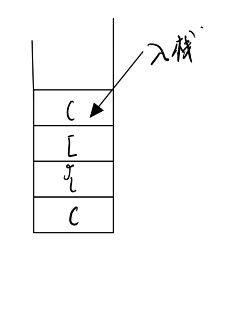
- 如果*s不是以上字符也就是’)’ 、’}’、 ‘]’ ,那就那他和栈顶的元素进行匹配,如果匹配了就将栈顶的元素出栈,不匹配就直接return false结束判断。循环完成返回return true
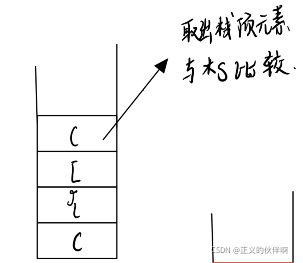
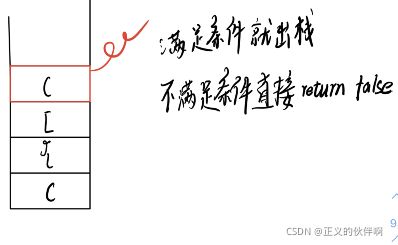
但是还是要注意一些特殊情况:
- 当字符串为 “(” 时,这时就要在末尾的return true前面判断栈是否为空,如果栈不为空,说明栈里面还有未匹配的字符,所以要返回false
- 当字符串为")"时,我们要在第二部也就时取栈顶元素之前判断栈是否为空,如果为空的话,就说明栈里面没有与右括号所匹配的左括号,返回false
用栈实现队列
leetcode-用栈实现队列
用队列实现栈主要的难点是在 出栈 和 返回栈顶元素 两个操作上
但是两个函数思路是一摸一样的
以 出栈函数 myQueuePop函数为例

这里为了实现队列,我们要创建两个栈来相互倒来将队首元素拿出,具体操作如下:
-
首先将s1栈的栈顶元素入到s2栈中,然后将栈顶元素出栈。重复上述操作直到s1栈为空。
-
这时整个栈的元素相当于逆置了,队首元素现在在栈顶的位置,下面的操作在 myQueuePop和myQueuePeek操作略有不同
- myQueuePop 要把s2栈顶的值出栈 - myQueuePeek 不用把s2的栈顶的值 -
最后首先将s2栈的栈顶元素入到s1栈中,然后将栈顶元素出栈。重复上述操作直到s2栈为空
代码:
#include队列
队列的概念和结构
队列: 只允许在一段进行插入数据操作,在另一端进行删除数据操作的特殊线性表,队列具有先进先出FIFO(first in first out) 入队列、进行插入操作的一端称为队尾 出队列、进行删除的一段称为队头

队列的实现
队列的实现同样可以使用数组和链表的结构实现,使用链表的结构实现更优一些,因为如果使用数组的结构,出队列在数组头上出数据,效率会比较低
#define _CRT_SECURE_NO_WARNINGS 1
#include以上时栈的结构和具体的基本操作
下面是这些具体操作的实现
#define _CRT_SECURE_NO_WARNINGS 1
#include"Queue.h"
void QueueInit(Queue* q)
{
ListNode* First = (ListNode*)malloc(sizeof(ListNode));
q->head = q->tail = First;
q->tail->next = NULL;
}
void QueuePush(Queue* q, Datatype x)
{
assert(q);
q->tail->x = x;
ListNode* NewNode = (ListNode*)malloc(sizeof(ListNode));
q->tail->next = NewNode;
q->tail = NewNode;
q->tail->next = NULL;
}
void QueuePop(Queue* q)
{
assert(q);
assert(!QueueEmpty(q));
if (!QueueEmpty(q))
{
ListNode* temp = q->head->next;
free(q->head);
q->head = temp;
}
}
Datatype QueueFront(Queue* q)
{
assert(q);
assert(!QueueEmpty(q));
return q->head->x;
}
Datatype QueueBack(Queue* q)
{
assert(q);
assert(!QueueEmpty(q));
ListNode* cur = q->head;
while (cur->next != q->tail)
{
cur = cur->next;
}
return cur->x;
}
int QueueSize(Queue* q)
{
if (QueueEmpty(q))
{
return 0;
}
ListNode* cur = q->head;
int k = 0;
while (cur != q->tail)
{
cur = cur->next;
k++;
}
return k;
}
int QueueEmpty(Queue* q)
{
return q->head == q->tail;
}
void QueueDestroy(Queue* q)
{
ListNode* cur = q->head;
while (cur != q->tail)
{
ListNode* temp = cur->next;
free(cur);
cur = temp;
}
free(cur);
cur = NULL;
q->head = NULL;
q->tail = NULL;
}
队列的应用
用队列实现栈
leetcode——原题
实现思路: 用两个队列来实现栈的功能,栈用队列的实现不同主要在myStackPop这个函数上,该如何得到队尾的元素是本题的难点:

以上就是我处理的思路:
- 首先保证q1永远是储存数据的队列,而q2是一个用来导数据的空队列
- 将q1中n-1个元素分别拷入q2,并将其出队列,留下队尾元素(栈顶),将其出队列(换句话就是将q1除队尾的元素拷入q2,并删除)
- 将q1与q2交换
#include循环队列
leetcode——原题
循环队列的逻辑结构
循环队列由一个队头(Front)偏移量和一个和一个队尾偏移量(Rear)和一个顺序表组成,在逻辑上是一个环形结构。但在物理存储结构上实际是一个顺序表,靠着一定的条件使得Front和Rear偏移量循环遍历数组。
逻辑结构:
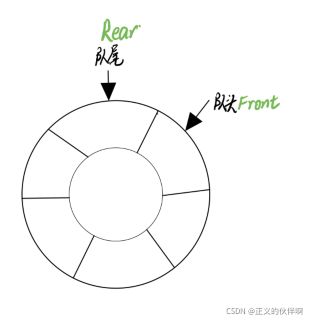
实际上的 物理结构:
结构设计
如果我们仔细思考一下就会发现 队空 和队满 两种情况都是Rear和Front都是重合的,如果用Rear==Front就无法判断队空 和队满
于是我们就用添加一个多余的空间(K+1)来解决这个问题

当Rear==Front时,这时我们就认为循环队列是空的

由于Rear始终指向的是队尾元素的下一个空间,所以设置一个空节点使队满的时候,Rear和Front不重合但是,满足条件Rear+1==Front,但是这里的判断条件实际上在写的过程中要写成((obj->Rear+1)%(obj->capacity))==obj->Front因为Rear+1可能要越过数组,所以要将他返回数组的起点以达到循环。
typedef struct {
int *a;
int Front;
int Rear;
int capacity;
} MyCircularQueue;
MyCircularQueue* myCircularQueueCreate(int k) {
MyCircularQueue*q=(MyCircularQueue*)malloc(sizeof(MyCircularQueue));
q->a=(int *)malloc((k+1)*sizeof(int));
q->Front=0;
q->Rear=0;
q->capacity=k+1;
return q;
}
bool myCircularQueueIsFull(MyCircularQueue* obj) {
return ((obj->Rear+1)%(obj->capacity))==obj->Front;
}
bool myCircularQueueIsEmpty(MyCircularQueue* obj) {
return ((obj->Front)%(obj->capacity))==obj->Rear;
}
bool myCircularQueueEnQueue(MyCircularQueue* obj, int value) {
if(myCircularQueueIsFull(obj)) //检查队列是否满了
return false;
obj->a[obj->Rear]=value;
obj->Rear++;
obj->Rear%=obj->capacity;
return true;
}
bool myCircularQueueDeQueue(MyCircularQueue* obj) {
if(myCircularQueueIsEmpty(obj))
return false;
obj->Front++;
obj->Front%=obj->capacity;
return true;
}
int myCircularQueueFront(MyCircularQueue* obj) {
if(myCircularQueueIsEmpty(obj))
return -1;
return obj->a[obj->Front];
}
int myCircularQueueRear(MyCircularQueue* obj) {
if(myCircularQueueIsEmpty(obj))
return -1;
return obj->a[(obj->Rear - 1+obj->capacity)%obj->capacity];
}
void myCircularQueueFree(MyCircularQueue* obj) {
free(obj->a);
free(obj);
obj=NULL;
}
易错点!
下面来分享一下我在写这个oj的时候遇到的问题:
- 首先是在myCircularQueueFront和myCircularQueueRear函数里面没有判断循环链表是否为空
- 第二个问题我找了好久才发现myCircularQueueRear返回的是队尾的数值,由于Rear始终指向的是下一个节点,所以末尾的元素是
a[(obj->Rear - 1]但是在这里要判断Rear-1是否满足循环数组的要求,如果不检查就会一直报heap—overflow

